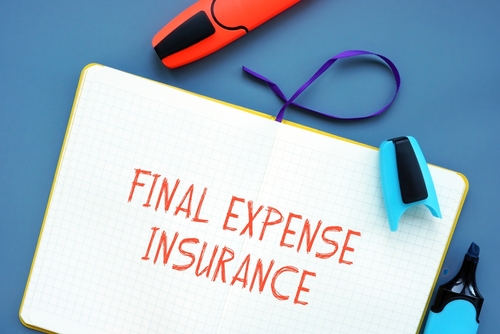The smart Trick of Pacific Prime That Nobody is Discussing
The smart Trick of Pacific Prime That Nobody is Discussing
Blog Article
Pacific Prime - Questions
Table of ContentsHow Pacific Prime can Save You Time, Stress, and Money.Some Known Facts About Pacific Prime.Get This Report about Pacific PrimeAbout Pacific Prime10 Simple Techniques For Pacific Prime
:max_bytes(150000):strip_icc()/basics-to-help-you-understand-how-insurance-works-4783595_final-9cf74d5b66d14f88a21ab29ddb290e2d.png)
This is because the information were collected for a duration of solid economic performance. Of the approximated 42 million people who were without insurance, just about concerning 420,000 (about 1 percent) were under 65 years of age, the age at which most Americans end up being qualified for Medicare; 32 million were adults in between ages 18 and 65, around 19 percent of all grownups in this age group; and 10 million were kids under 18 years old, about 13.9 percent of all children (Mills, 2000).
These quotes of the variety of persons uninsured are produced from the yearly March Supplement to the Existing Population Survey (CPS), performed by the Demographics Bureau. Unless or else noted, national estimates of people without health and wellness insurance policy and proportions of the population with different kinds of insurance coverage are based on the CPS, the most widely used resource of price quotes of insurance policy protection and uninsurance prices.
The smart Trick of Pacific Prime That Nobody is Discussing

Still, the CPS is specifically helpful since it produces yearly price quotes fairly rapidly, reporting the previous year's insurance protection estimates each September, and because it is the basis for a regular collection of estimates for greater than two decades, permitting analysis of fads in protection over time. For these factors, in addition to the comprehensive use of the CPS in various other studies of insurance policy coverage that exist in this record, we rely on CPS price quotes, with restrictions noted.

The estimate of the variety of uninsured individuals broadens when a population's insurance policy standing is tracked for a number of years. Over a three-year period starting early in 1993, 72 million people, 29 percent of the united state population, lacked protection for at the very least one month. Within a single year (1994 ), 53 million individuals experienced a minimum of a month without protection (Bennefield, 1998a)
Six out of every 10 uninsured grownups are themselves utilized. Although working does boost the chance that one and one's household members will certainly have insurance coverage, it is not a guarantee. Even participants of families with two permanent wage earners have nearly a one-in-ten chance of being uninsured (9.1 percent without insurance rate) (Hoffman and Pohl, 2000).
Getting The Pacific Prime To Work
New immigrants make up a considerable percentage of individuals without medical insurance. One evaluation has actually connected a significant portion of the recent growth in the size of the U.S. uninsured populace to immigrants that showed up in the nation in between 1994 and 1998 (Camarota and Edwards, 2000). Current immigrants (those that involved the USA within the previous 4 years) do have a high price of being without insurance (46 percent), yet they and their youngsters make up simply 6 percent of those without insurance policy across the country (Holahan et al., 2001).
The relationship between medical insurance and access to care is well established, as documented later in this chapter. Although the connection between medical insurance and wellness end results is neither straight nor easy, a considerable professional and wellness services research literature web links medical insurance coverage to improved accessibility to care, much better high quality, and enhanced personal and populace wellness condition.
Degrees of evaluation for taking a look at the effects of uninsurance. This conversation of wellness insurance protection focuses largely on the U.S. populace under age 65 since practically all Americans 65 and older have Medicare or various other public protection. It concentrates specifically on those without any kind of health insurance coverage for any kind of length of time.
Some Known Questions About Pacific Prime.
The problems faced by the underinsured are in some aspects similar to those encountered by the uninsured, although they are typically much less extreme. international travel insurance. Uninsurance and underinsurance, nevertheless, include definitely different plan concerns, and the methods for addressing them may vary. Throughout this research study and the five reports to adhere to, the major focus is on persons without wellness insurance coverage and therefore no assistance in spending for healthcare past what is offered with charity and safety internet organizations
Medical insurance is an effective element affecting invoice of care due to the fact that both individuals and physicians respond to the out-of-pocket price of solutions - https://justpaste.it/f0gjl. Medical insurance, however, is neither necessary neither adequate to get to medical solutions. The independent and direct effect of wellness insurance coverage on accessibility to health solutions is well developed.
Others will acquire the health treatment they need also without health insurance, by paying for it out of pocket or seeking it from companies that provide treatment totally free or at very subsidized rates. For still others, medical insurance alone does not ensure receipt of treatment since of various other nonfinancial barriers, such as a lack of wellness care companies in their community, restricted accessibility to transportation, illiteracy, or linguistic and social distinctions.
The Best Guide To Pacific Prime
Formal research look at this now regarding uninsured populations in the United States dates to the late 1920s and early 1930s when the Committee on the Cost of Treatment created a collection of records regarding financing doctor workplace visits and hospitalizations. This issue became salient as the varieties of medically indigent climbed during the Great Depression.
Report this page